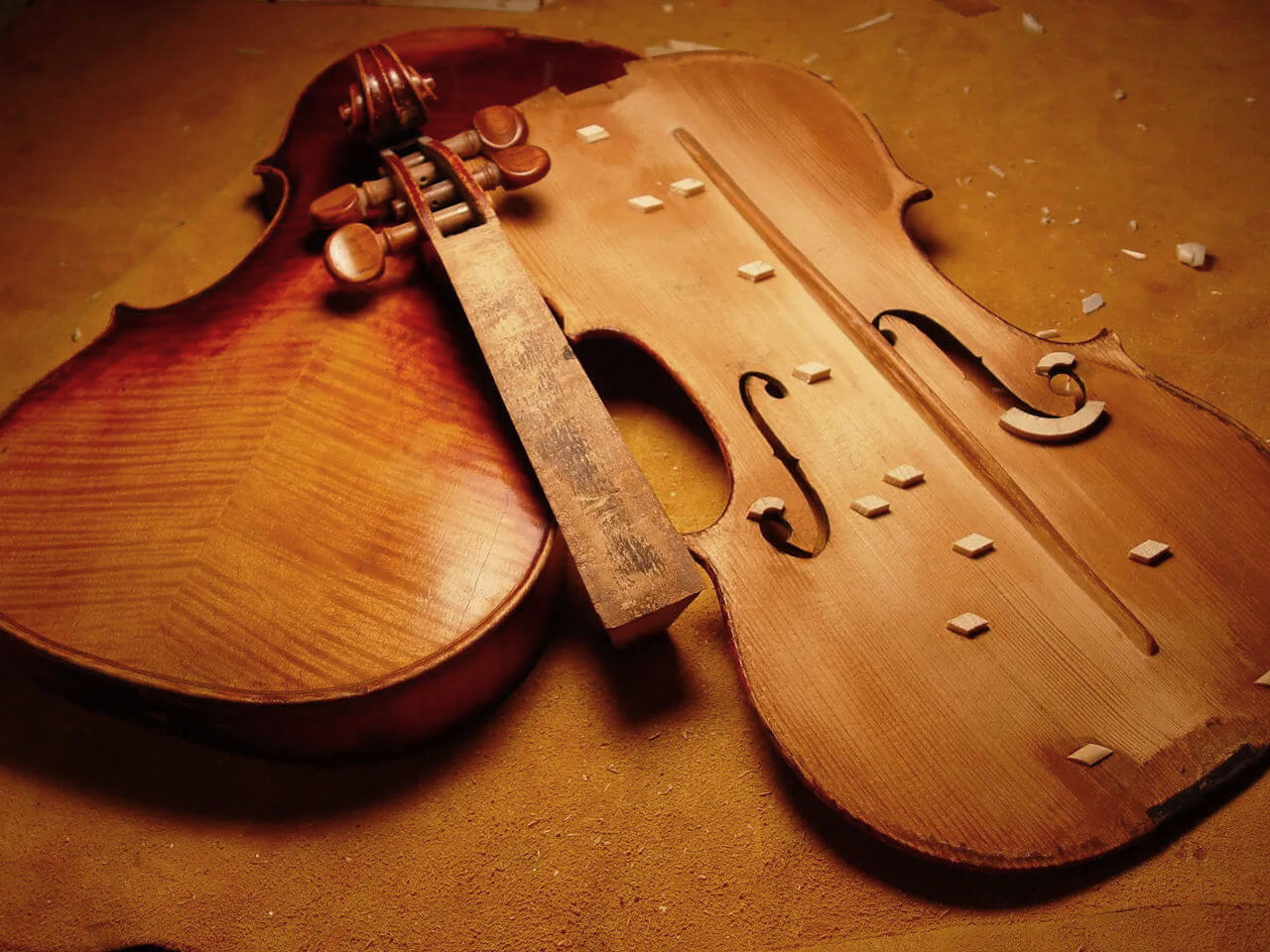Your instrument is made of thin wood up to 6mm on the whole and is always susseptible to the fluctuations of the climate. Occassionally the wood may crack and need to be addressed.
Also just the general wear and tear of playing will mean you’ll eventually need your instrument servicing. Here are some of the services we offer:
- Cracks – (pictured below) cracks are caused by seasonal changes or accidental damage. When repaired they are enforced with little cleats to prevent re-opening as the instruments moves and vibrates.
- Fitting new corners/edges – where a corner or edge has become too worn.
- Dressing the Fingerboard – a fingerboard needs to be dressed to remove ruts which occur from playing.
- Making a new fingerboard – A finger board with time needs to be replaced from an excess of it being dressed.
- Fitting patches and strengthening – sometimes a section becomes too worn from poor repair, a patch may need to be fitted for strength or wood replacement.
- Fitting new bass bars – when a bar is not fitted in the correct position or a crack has developed along side.
- Peg bushings and new pegs – where the peg holes have become too big or poorly aligned an string rub occurs.
- Neck grafts and re-alignment – When a neck is not in line with the body, damaged, has become worn or too short



